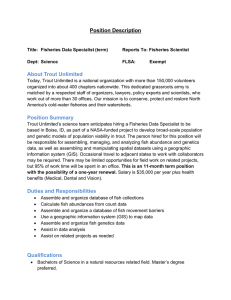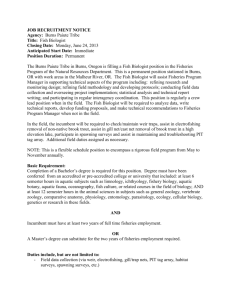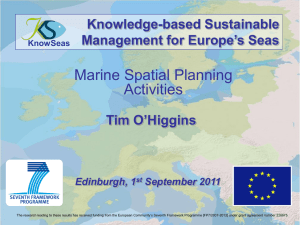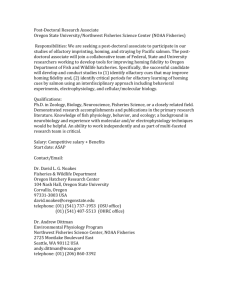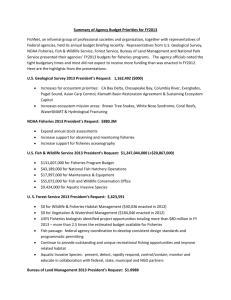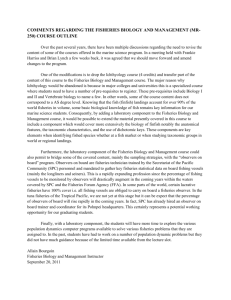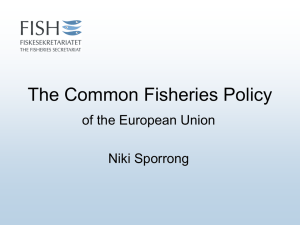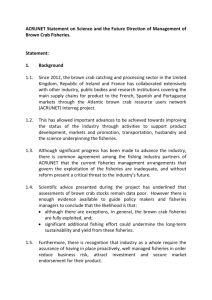Fisheries Web Survey
advertisement
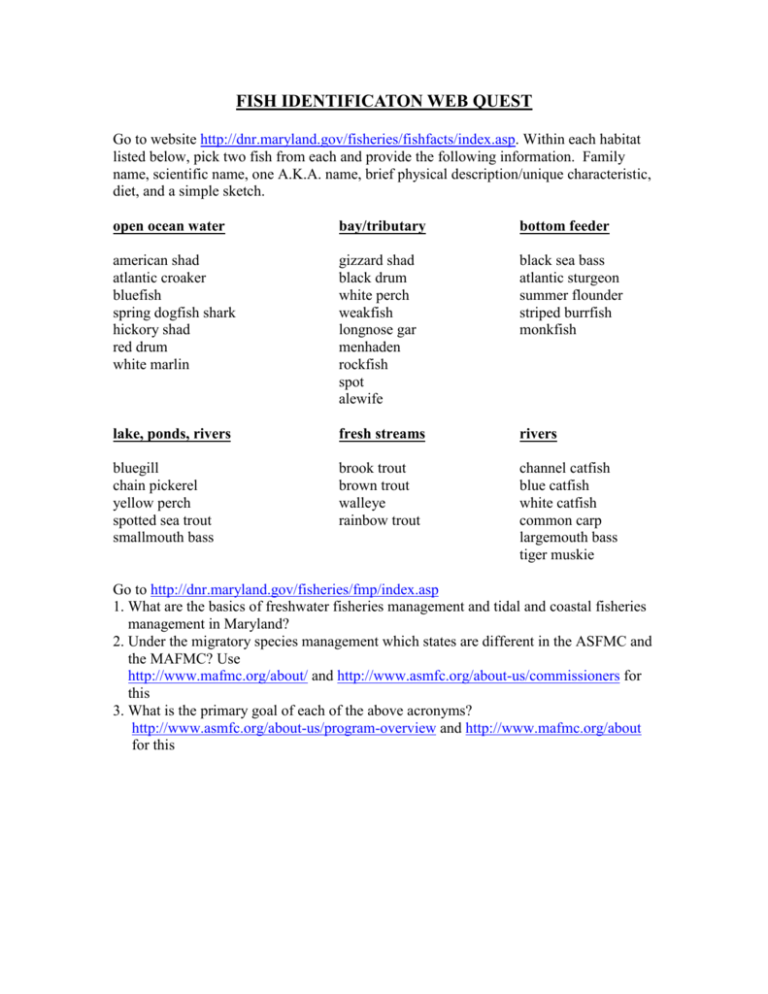
FISH IDENTIFICATON WEB QUEST Go to website http://dnr.maryland.gov/fisheries/fishfacts/index.asp. Within each habitat listed below, pick two fish from each and provide the following information. Family name, scientific name, one A.K.A. name, brief physical description/unique characteristic, diet, and a simple sketch. open ocean water bay/tributary bottom feeder american shad atlantic croaker bluefish spring dogfish shark hickory shad red drum white marlin gizzard shad black drum white perch weakfish longnose gar menhaden rockfish spot alewife black sea bass atlantic sturgeon summer flounder striped burrfish monkfish lake, ponds, rivers fresh streams rivers bluegill chain pickerel yellow perch spotted sea trout smallmouth bass brook trout brown trout walleye rainbow trout channel catfish blue catfish white catfish common carp largemouth bass tiger muskie Go to http://dnr.maryland.gov/fisheries/fmp/index.asp 1. What are the basics of freshwater fisheries management and tidal and coastal fisheries management in Maryland? 2. Under the migratory species management which states are different in the ASFMC and the MAFMC? Use http://www.mafmc.org/about/ and http://www.asmfc.org/about-us/commissioners for this 3. What is the primary goal of each of the above acronyms? http://www.asmfc.org/about-us/program-overview and http://www.mafmc.org/about for this Go to http://www.pcouncil.org/resources/applicable-laws/magnuson-stevens-act/ and read the pdf on the Magnuson-Stevens Act. 1. Write a brief overview of the main ideas of the MSA. 2. Which two government agencies are responsible for the MSA? 3. List two other federal laws that work in conjunction with the MSA. 4. Out of the ten listed summarized goals of the MSA, pick three that you think are the most important in maintaining sustainable fisheries and list the rationale for your choices. Go to http://www.nmfs.noaa.gov/speciesid/Sustainability.html Click on the individual pictures for the enlarged pictures of the organism or item and a description. 1. List the common name and scientific name of a commercially important mollusk and list 3 facts about the mollusk. 2. Do the same for an arthropod. 3. Click on the five types of fishing vessels and provide a one sentence description of each vessel type and its fishing technique. 4. Click on the Walleye pollock and describe its importance to fisheries worldwide. What happens to most Pollack caught? 5. Find and click on the Northern Right Whale and describe how it got its name. Then, list the common scientific and common names for the other 5 whales and dolphins in the picture. 6. Find and click on the Atlantic Bluefin Tuna. What specific events have led to a dramatic reduction in Bluefin tuna stocks worldwide? Go to http://www.seafoodwatch.org/ocean-issues/fishing-and-farming-methods 1. List all the non-aquaculture fisheries harvesting techniques listed on the web site. 2. Describe the dredging technique and its environmental impact. 3. Describe purse-seining fishing. What type of fish is the technique used for? 4. How is purse seining related to dolphins? 5. List the 5 types of aquaculture techniques and describe one in detail. Go to http://www.seafoodwatch.org/ and click on the Use Our Consumer Guides Section. Download the Maryland Guide. The fish species are listed according to their sustainable harvesting. List the classification categories in terms of sustainability and list two species from each category.

